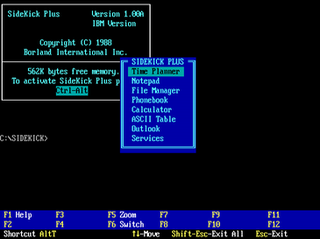
Borland Sidekick was a personal information manager (PIM) launched by American software company Borland in 1984 under Philippe Kahn's leadership. It was an early and popular terminate and stay resident program (TSR) for MS-DOS which enabled computer users to activate the program using a hot key combination while working in other programs. Although a text-mode program, Sidekick's window-based interface echoed that of the Apple Macintosh and anticipated the eventual look of Microsoft Windows 2.0. It included a personal calendar, text editor, calculator, ASCII chart, address book, and phone dialer. According to the prospectus for Borland's initial public offering of stock to the public, Sidekick sold more than 1 million copies in its first three years.
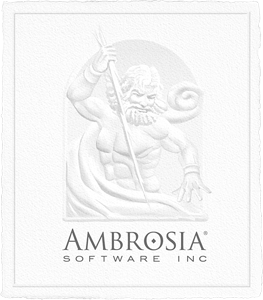
Ambrosia Software was a predominantly Macintosh software company founded in 1993 and located in Rochester, New York, U.S. Ambrosia Software was best known for its Macintosh remakes of older arcade games, which began with a 1992 version of Atari, Inc.'s Asteroids from 1979. The company also published utility software. Its products were distributed as shareware; demo versions could be downloaded and used for up to 30 days. Later the company released some products for iOS. Ambrosia's best-selling program was the utility Snapz Pro X, according to a 2002 interview with company president Andrew Welch.

System 6 is a graphical user interface-based operating system for Macintosh computers, made by Apple Computer It was released in 1988, and is part of the classic Mac OS series. It is a monolithic operating system, with cooperative multitasking based on an improved MultiFinder. The boxed version cost US$49, and it was included with all new Macintosh computers until 1991, when it was succeeded by System 7.

Mac OS 8 is an operating system that was released by Apple Computer on July 26, 1997. It includes the largest overhaul of the classic Mac OS experience since the release of System 7, approximately six years before. It places a greater emphasis on color than prior versions. Released over a series of updates, Mac OS 8 represents an incremental integration of many of the technologies which had been developed from 1988 to 1996 for Apple's overly ambitious OS named Copland. Mac OS 8 helped modernize the Mac OS while Apple developed its next-generation operating system, Mac OS X.

Connectix Corporation was a software and hardware company, noted for having released innovative products that were either made obsolete as Apple Computer incorporated the ideas into system software, or were sold to other companies once they became popular. It was formed in October 1988 by Jon Garber; dominant board members and co-founders were Garber, Bonnie Fought, and close friend Roy McDonald. McDonald was still Chief Executive Officer and president when Connectix finally closed in August 2003.

Microsoft Entourage is a discontinued e-mail client and personal information manager that was developed by Microsoft for Mac OS 8.5 and later. Microsoft first released Entourage in October 2000 as part of the Microsoft Office 2001 office suite; Office 98, the previous version of Microsoft Office for the classic Mac OS included Outlook Express 5. The last version was Entourage: Mac 2008, part of Microsoft Office 2008 for Mac, released on January 15, 2008. Entourage was replaced by Outlook for Macintosh in Microsoft Office for Mac 2011, released on October 26, 2010.

Norton Utilities is a utility software suite designed to help analyze, configure, optimize and maintain a computer. The latest version of the original series of Norton Utilities is Norton Utilities 16 for Windows XP/Vista/7/8 was released 26 October 2012.
Script Debugger is a Macintosh computer source code editor and debugging environment for the AppleScript programming language, and other languages based on Apple Inc.'s Open Scripting Architecture. It is a product of Late Night Software.

Unsanity was a macOS shareware software developer founded in May 2000, notable for coining the term "haxie". Unsanity produced Mac utilities that relied on their own Application Enhancer, a utility that modified the system and other applications. Software incompatibility with Mac OS X Leopard, Snow Leopard, and Lion ended Unsanity's offerings.
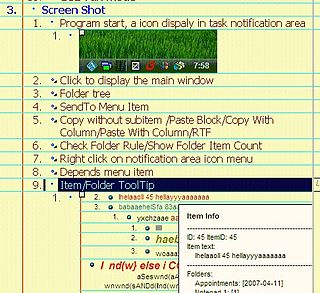
Ecco Pro was a personal information manager software based on an outliner, and supporting folders similar to spreadsheet columns that allow filtering and sorting of information based upon user defined criteria.
Rae Technology was a software company founded as a spin-off from Apple Computer in 1992. Rae Technology was best known for its Personal Information Manager Rae Assist and for being the predecessor of NetObjects, Inc. After transferring new developed technology for web site design to NetObjects, Inc. in 1995, Rae Technology had no further public recognition.

Paragon Software Group is a German software company that develops hard drive management software, low-level file system drivers and storage technologies. The Smart Handheld Device Division (SHDD) offers multilingual dictionaries, multilingual handwriting recognition, weather information, and two-way data synchronization with desktop devices.
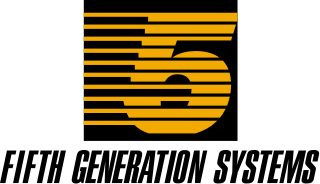
Fifth Generation Systems, Inc., was a computer security company founded October 1984 in Baton Rouge, Louisiana, United States by Robert Mitchell, Leroy Mitchell, Roger Ivey, and Bruce Ray. All four later left the company. Fifth Generation's initial commercial product was FastBack, the first practical hard disk backup program for the IBM PC.

OS X Mountain Lion is the ninth major release of macOS, Apple Inc.'s desktop and server operating system for Macintosh computers. OS X Mountain Lion was released on July 25, 2012, for purchase and download through Apple's Mac App Store, as part of a switch to releasing OS X versions online and every year, rather than every two years or so. Named to signify its status as a refinement of the previous OS X version, Lion, Apple's stated aims in developing Mountain Lion were to allow users to more easily manage and synchronise content between multiple Apple devices and to make the operating system more familiar.

OS X Mavericks is the 10th major release of macOS, Apple Inc.'s desktop and server operating system for Macintosh computers. OS X Mavericks was announced on June 10, 2013, at WWDC 2013, and was released on October 22, 2013, worldwide.

macOS Sierra is the thirteenth major release of macOS, Apple Inc.'s desktop and server operating system for Macintosh computers. The name "macOS" stems from the intention to uniform the operating system's name with that of iOS, watchOS and tvOS. Sierra is named after the Sierra Nevada mountain range in California and Nevada. Its major new features concern Continuity, iCloud, and windowing, as well as support for Apple Pay and Siri.
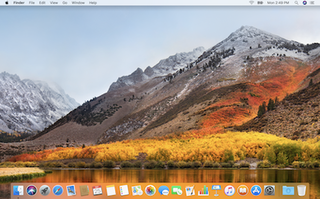
macOS High Sierra is the fourteenth major release of macOS, Apple Inc.'s desktop operating system for Macintosh computers. macOS High Sierra was announced at the WWDC 2017 on June 5, 2017 and was released on September 25, 2017. The name "High Sierra" refers to the High Sierra region in California. Its name signified its goal to be a refinement of the previous macOS version, macOS Sierra, focused on performance improvements and technical updates rather than features. This makes it similar to previous macOS releases Snow Leopard, Mountain Lion and El Capitan. Among the apps with notable changes are Photos and Safari.
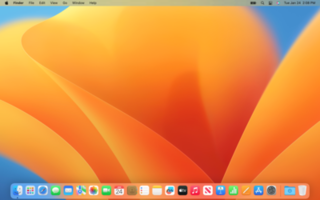
macOS Ventura is the nineteenth and current major release of macOS, Apple's desktop operating system for Mac computers. The successor to macOS Monterey, it was announced at WWDC 2022 on June 6, 2022, and launched on October 24, 2022. It is named for the city of Ventura and is the tenth macOS release to bear a name from the company's home state of California. The macOS 13 Ventura logo and default wallpaper resemble an abstract California poppy.

Carbon Copy Cloner is a backup utility for macOS made by Bombich. The app allows people to clone a user's data onto another hard drives or solid state drives. It has been extensively covered in Apple-related publications, and received positive reviews.
















